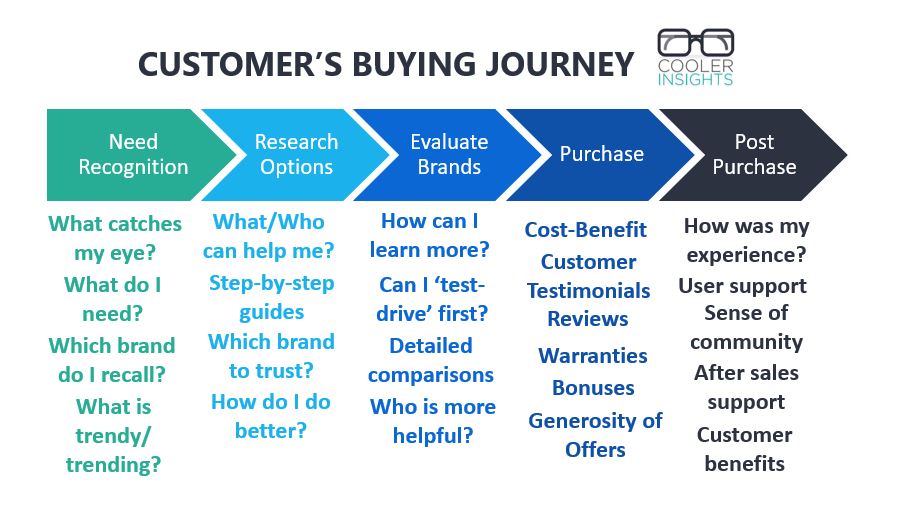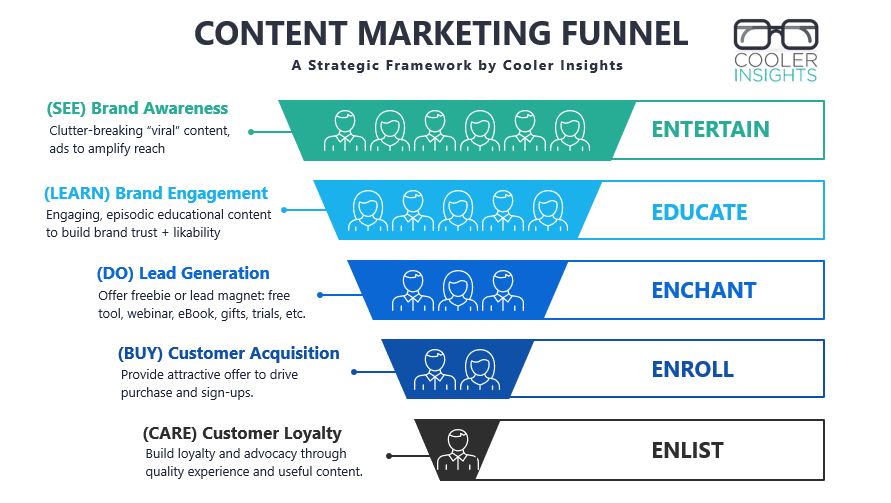
Business photo created by pressfoto – www.freepik.com
The amazing growth in digital, social and mobile technologies have changed how we live, work, get around, and play.
Thanks to their rapid rate of innovation, start-ups and established Business to Business (B2B) technology firms have rolled out new services, apps, and equipment that offer significant leaps in performance at a fraction of the original cost.
While some have enjoyed significant traction across multiple regional and global markets, many others have disappeared.
Often, these technology-based initiatives and start-ups fail due to their inability to change how their markets thinks, feels or behaves.
Focused on how wondrous their technologies are, they do not invest enough time, money or effort to understand what their customers need and reach them through targeted and relevant marketing.
But why B2B content marketing? Why not other forms of digital or offline marketing?
In this article, I will explain why content marketing is ideal for tech-based companies and propose how you can create the best content marketing strategy for your B2B technology firm.
Why Content Marketing is Perfect for B2B Tech Firms
But first, let us look at why content marketing is an ideal form of digital marketing for technology-based firms.
While you can splash money on an online ad to generate traffic and conversions for an app, software, or hardware, it doesn’t have the same impact as well produced content on your website.
Here are 7 reasons why content marketing is suited for companies selling to other companies in the technology field:
#1 Justify High Prices
Most technology solutions aren’t cheap. While Software-as-a-Service (SaaS) types of solutions may appear to have a low recurring cost (“only $99 per month”), they often have a higher lifetime cost to the client.
Content marketing works well for higher priced products because customers need to spend more time researching their technology options before purchasing.
#2 Match Long Purchase Cycle
Most business IT hardware, software and other services are not bought in a jiffy. There is a need to carefully match the specifications of the company’s requirements against what vendors are providing. Negotiations on price are also common in enterprise-level technology solutions.
Content marketing is ideal as the right types of content can help to move customers along the funnel—from being aware of your brand, weighting the different options via research, making comparisons between competing brands to after-sales warranties.
#3 Establish Brand Trust
Buying an IT system or solution isn’t like changing your shampoo. You need to train your staff to use the new system, integrate it with your current processes, and get used to a new way of doing business.
By assuring your client about your track record, knowledge and experience in their industry, content marketing can help you to build brand trust while removing potential risks that they may encounter.
#4 Educate on Sophisticated Features
With numerous features and benefits, technology solutions can be both exciting and nerve wracking. With its emphasis on client education, content marketing can help to reduce the learning curve before the purchase is made. It can also help prospects to familiarise themselves with how the system works through step-by-step guides.
#5 Fend off Competition
Highly funded and hugely competitive, the technology arena is one with many gladiators but few winners.
To stand out from the rest, your firm can’t merely depend on your product bells and whistles to attract attention. You need to weave a better story than the rest, and content marketing is ideal for this purpose.
#6 Reduce Onboarding Friction
Often the high cost for technology doesn’t just lie in the price of the systems alone. Rather, it comes with needing to get your team members acquainted with how a solution works, new SOPs for handling different scenarios, and revised workflows.
With its emphasis on structured customer education, content marketing can help to greatly reduce the need for extensive persuasion and training of staff post-purchase.
#7 Allay Fear through Use Cases
Yep, a new technology can be scary for companies accustomed to the old ways of doing things. After all, why fix it if it ain’t broken?
Once again, content marketing can shine here, by offering any of the following types of content:
- Use cases and scenarios
- Customer testimonials
- Customer success stories (eg “Before” and “After”)
Developing a Content Marketing Strategy for a Tech Business
Now that you’re convinced that content marketing is cool for you, the next question is “How?”
Here, I’d like to propose a 7-step process which you can use to craft a content marketing strategy for your technology firm.
#1 Research Your Content Environment
Without knowing the context of your industry, it will be difficult for you to craft a suitable content strategy.
Here, you can use several content research tools to determine what technology-related keywords and topics your customers and competitors are using:
- Google Trends allows you to compare a few different keywords to determine which has a higher volume of search. You can also determine seasonal peaks for your industry here.
- Ubersuggest lets you dive more deeply into different keyword combinations for your content, and to choose a less competitive one that has sufficient volume.
- LSIGraph provides you with long-tail keywords (actual words typed into Google) that your potential customers could be using
- Moz Link Explorer helps you to spy on your competitor websites to see what their link profile is (ie websites linking to them). You can then approach these websites to consider linking to you IF your resource page is better than your competitor’s!
- BuzzSumo shows you what the most-shared pieces of content related to your keywords or topics are.
Using a combination of these research tools, you should have a good idea of the types of keywords that you can use for your industry, as well as how you could phrase them.
#2 Study Your Customer in Detail
Next, you need to understand who your customer is, and what may possibly drive them.
In the B2B environment, your customer profile may include the following parameters:
- Demographics: How big are your client companies in terms of staff strength, annual turnover, and physical assets?
- Location: Are they located within your home market, or spread across the region or even the globe?
- Purchase Patterns: Do you need to respond to a Request For Proposal (RFP) or can purchases be made directly? What are the usual contracting terms like?
- Psychographic Factors: What are some of the concerns, interests, and behaviours of the staff in your client companies? How can your technology solution address them?
(Read more about building a customer profile here.)
#3 Describe Current Problems—and Offer Content Solutions
Implementation of any new technology often comes with their teething problems. The best content marketers out there are cognisant of these obstacles, and they craft specific pieces of content to address them as well as they could.
Think of content marketing as answering all the doubts, nagging fears, and concerns which your prospect may have BEFORE they sign on the dotted line.
To gather information on what your client concerns are, you can speak to your sales or business development colleagues. Often, these folks would know what objections their prospects have, and how they can overcome them.
Do also consider visiting industry-related forums to tease out customer pain points, or have a look at the types of questions potential customers are asking. You can also check out reviews of your competitor as well as your own IT solutions on Google or other platforms to see what issues need addressing.
#4 Establish a Unique (and Memorable) Brand
To stand out from your competitors, you need to do three things with your technology brand:
- Attract attention and stand out from competitive brands
- Grow brand affection and trust by providing helpful and targeted content to your prospects
- Trigger action with the right hooks and offers
Competing using features and benefits alone is going to be challenging in highly saturated technology markets. What you need to do is to create a memorable and distinct brand story that can anchor you stand for.
Do also see if your technology solution can stand for something larger than itself—position it as a movement that seeks to revolutionize your industry and change how things are done.
#5 Build Thought Leadership
Pick your favourite technology buzzword. Disruption maybe? Artificial Intelligence (A.I.) and machine learning? Robotics and chatbots? What about the Internet Of Things (iOT) or blockchain?
While I don’t suggest that you chase after every tech-fueled jargon out there, it is important to establish your company as a thought leader in your specific technology arena. This has the advantage of making yourself more trusted and reputable in the eyes of your prospective customers.
To do so, you may wish to do surveys and focus groups to publish research reports related to your industry. Or interview thought leaders and influencers in your space, and summarize their insights in a report, article, or video.
#6 Match Content with Customer’s Buying Stages
While crafting 10,000 foot crystal-ball gazing content can help your technology company to gain market reputation, getting your clients to buy often takes more tactical, feet-on-the-ground type content.
Here, it is useful to consider the 5-stages of your customer’s purchasing behaviour and the types of questions that they’ll be asking in their heads:
- Need Recognition: What technology solution, system, hardware or software do I need? What is available in the market?
- Research Options: Which technology brand do I consider? Which ones do I trust?
- Evaluate Brands: What are the different USPs for each of the brand? How do I tell which is better?
- Purchase: What are the guarantees, customer-support like? How do other customers find this product or service?
- Post Purchase: What was my experience like? Would I recommend this vendor to another company?

#7 Nurture Your Leads through a Funnel and a Calendar
Finally, and so importantly, you do need to have a system of putting all of your content pieces at the right place, on the right platforms, at the right time, to the right audiences.
Here, it is useful to consider structuring two things:
- A Marketing Funnel: Use this to map out the journey which your customer may take, and the different touch points and content types that you need to move them down the funnel. (Read my article to learn more about funnels.)

- A Content Calendar: Use this to plan, schedule and allocate the necessary time, manpower, and budgets for your content marketing efforts.
Conclusion
Fast-moving and relentlessly competitive, the technology sector is one that is constantly evolving.
To compete effectively in this space, IT companies and digital solution vendors need to do more than just focus on building the best product for your clients. You need to position your company and your brands as market leaders, build brand trust and reputation, and generate customer loyalty and advocacy.
Against this backdrop, content marketing would probably be the best bet for your firm.
What do you think? Do you agree that content marketing is ideal for your technology firm? If not, why not?
